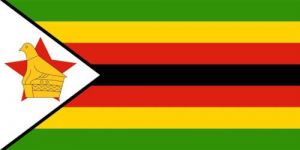Language/Shona/Grammar/How-to-Use-Be
Hi Shona learners! 😊
In this lesson, we will learn about the different ways to use the verb "be" in Shona. "Be" is one of the most commonly used verbs in the English language and in Shona as well. By the end of this lesson, you will know how to use "be" in various contexts and with different forms of Shona speech.
Don't forget that to improve your Shona Grammar, you can also use the Polyglot Club website. Find native speakers and ask them any questions!
What is the Verb "Be"[edit | edit source]
The verb "be" is an English auxiliary verb. It is used to indicate various states of being, such as existence, identity, location, and so on. In Shona, however, the verb "be" is not necessarily translated as "be" all the time. Instead, it can be expressed through other elements of Shona speech, such as particles, pronouns, and verb tense.
How to Use "Be" to Indicate Existence[edit | edit source]
To indicate the existence of something or someone, we use the Shona particle "-po" or "-ko".
| Shona | Pronunciation | English |
|---|---|---|
| Ndiri-ko | ndi-ree-ko | I am here |
| Iko | ee-ko | It is there |
| Uko | oo-ko | You are there |
| Vanhu vako vari kumusha | vanhoo vako vari koo-moo-sha | Your people are at home |
How to Use "Be" to Indicate Identity[edit | edit source]
To indicate the identity of someone or something, we use the pronoun "ndi" (I am), "u" (you are), or "a" (he/she/it is), followed by the name or description.
| Shona | Pronunciation | English |
|---|---|---|
| Ndinonzi Tariro | ndee-no-nzi ta-ree-ro | My name is Tariro |
| Unonzi Takunda | oo-no-nzi ta-koo-nda | Your name is Takunda |
| Anonzwa kunyanya | aa-no-nzwa koo-nya-nya | He/she/it feels tired |
| Anogara mumaokoake | aa-no-gaa-ra moo-mao-ko-aake | He/she/it is sitting in his/her/its arms |
How to Use "Be" to Indicate Location[edit | edit source]
To indicate the location of someone or something, we use the Shona particle "-po" or "-ko", followed by the noun or pronoun.
| Shona | Pronunciation | English |
|---|---|---|
| Ndiri muclass | ndi-ree moo-kla-ss | I am in class |
| Uri munzira | oo-ree moo-nzee-ra | You are on the road |
| Anogara pabhawa | aa-no-gaa-ra pa-bha-wa | He/she/it is on the roof |
| Tinoda kuziva kuti munhu ari kupi | tee-no-daa ku-zee-va koo-tee moo-nhoo a-ree koo-pee | We want to know where the person is |
How to Use "Be" with Verb Tenses[edit | edit source]
In Shona, the verb "be" can also be used to form different tenses, such as present simple ("ndiri"), past simple ("ndakanga"), present continuous ("ndinoda kugara"), and past continuous ("ndainetse"), among others. Here are some examples:
| Shona | Pronunciation | English |
|---|---|---|
| Ndiri kufamba | ndi-ree koo-fa-mba | I am walking |
| Ndakanga ndisina kudei | ndaa-kaa-nga ndi-see-na koo-daa-yi | I was not hungry |
| Ndinoda kuzovhura maziso angu | ndi-no-daa koo-zo-vhu-ra ma-zee-so aa-ngu | I want to open my eyes |
| Ndainetse kuimba | ndaa-ee-net-se koo-eem-ba | I was singing |
Practice Dialogue[edit | edit source]
Person 1: Ndiri kumusha. (I am at home) Person 2: Ahh, ndinokumbirawo uchindinzwa. (Oh, please say that again?) Person 1: Ndinoenda kumabhazi. (I am going to the bus station) Person 2: Unotenga ticket here here? (Are you buying a ticket here?) Person 1: Aiwa, ndirikungoenda kunoviga kwaHwange. (No, I am going to Victoria Falls) Person 2: Ahh, unonzwa kunyanya? (Oh, are you feeling tired?)
Conclusion[edit | edit source]
In this lesson, we learned how to use the verb "be" in different contexts and with different forms of Shona speech. Don't forget the key points: to indicate existence, we use the Shona particles "-po" or "-ko"; to indicate identity, we use the pronouns "ndi", "u", or "a", followed by the name or description; to indicate location, we use the Shona particle "-po" or "-ko", followed by the noun or pronoun; and to form different tenses, we use different forms of the verb "be".
➡ If you have any questions, please ask them in the comments section below.
➡ Feel free to edit this wiki page if you think it can be improved. 😎
Excellent job on conquering this lesson! Consider delving into these related pages: Present Tense & Negation.
Videos[edit | edit source]
Learn Shona: How to use 'I' in Shona sentences (Shona Grammar ...[edit | edit source]
Other Lessons[edit | edit source]
- Gender
- Negation
- Adjectives
- Give your Opinion
- Pronouns
- Questions
- Plurals
- Conditional Mood
- How to Use Have
Sources[edit | edit source]
- Shona language - Wikipedia
- Shona Language - Dialects & Structure - MustGo
- Shona Grammar | LEARN101.ORG

